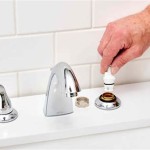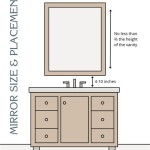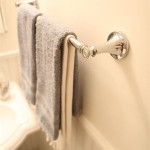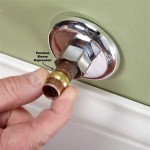How to Organize Your Bathroom Medicine Cabinet
The bathroom medicine cabinet is a crucial part of any home, housing essential medications, first-aid supplies, and personal care items. However, it can easily become a cluttered and chaotic space. A well-organized medicine cabinet not only promotes efficiency but also ensures the safety and accessibility of its contents. This article will provide a comprehensive guide to organizing your bathroom medicine cabinet for optimal functionality and peace of mind.
1. Declutter and Categorize
The first step in organizing your medicine cabinet is decluttering. Remove all items, discard expired medications and toiletries, and assess what is truly essential. Many products, such as travel-sized items or duplicates, can be discarded or relocated. Once you have decluttered, categorize items into logical groups, such as:
- Prescription medications
- Over-the-counter medications
- First-aid supplies
- Personal care items (toothbrushes, floss, toothpaste, etc.)
- Feminine hygiene products
This categorization will help you better understand what you have and make it easier to locate items when needed.
2. Utilize Storage Solutions
Once you have decluttered and categorized your items, it is time to implement efficient storage solutions. There are numerous options available, each with its advantages:
- Dividers: Adjustable dividers are an excellent way to create compartments within the cabinet, separating medications, toiletries, and first-aid supplies. They help prevent items from rolling around and make it easier to find what you need.
- Bins and baskets: Plastic or wire bins and baskets can be used to hold smaller items, such as bandages, cotton balls, and eye drops. Label them for easy identification.
- Over-the-door organizers: If your medicine cabinet lacks space, an over-the-door organizer can provide additional storage for items like hairbrushes, styling tools, or personal care products.
- Magnetic organizers: Consider using magnetic strips to hold metal items like tweezers, nail clippers, or scissors.
When selecting storage solutions, prioritize clear or transparent options to help you easily see and identify your items.
3. Implement a Labeling System
A well-organized medicine cabinet includes a clear labeling system. This is crucial for identifying items quickly and efficiently. Consider these labeling strategies:
- Labeling containers: Label bins, baskets, and other storage containers with clear, descriptive labels indicating their contents.
- Using sticky notes: Sticky notes can be used to label individual items, especially medications, with their name, dosage, and expiration date.
- Using a whiteboard: A small whiteboard placed inside the cabinet can be used to list important information, such as medication schedules or contact details for your doctor.
Maintain consistency in your labeling style for easy identification.
4. Prioritize Safety and Accessibility
When organizing your medicine cabinet, it is essential to prioritize safety and accessibility. Medications should be stored safely, out of reach of children and pets. Consider these tips:
- Store medications in their original containers: This ensures that the label information remains intact.
- Keep medications in a cool, dry place: Avoid storing medications in areas exposed to extreme temperatures or humidity.
- Dispose of expired medications safely: Never flush medications down the drain or throw them in the trash. Follow your local guidelines for proper disposal.
- Store sharps in a dedicated container: Use a puncture-resistant container for needles, syringes, or other sharp objects.
Ensuring the safety of your medications and first-aid supplies is essential.
5. Regularly Maintain Your Medicine Cabinet
Organizing your medicine cabinet is a continuous process. Regular maintenance ensures that it remains organized and functional. It is recommended that you:
- Check for expired medications and toiletries monthly: Discard any expired items promptly.
- Restock supplies as needed: Ensure you have enough medications, first-aid supplies, and personal care items to meet your needs.
- Reorganize as needed: If your storage options are no longer working for you, consider making adjustments or trying new solutions.
By maintaining your medicine cabinet regularly, you can ensure that it remains well-organized and accessible for years to come.

How To Organize Your Medicine Cabinet The Container

4 Easy Steps To Organizing A Medicine Cabinet Moving Insider

Easy Tips For Medicine Cabinet Organization The Idea Room

17 Genius Ideas To Organize Your Medicine Cabinet Kids Activities Blog

9 Clever Ways To Organize Your Medicine Cabinet Organization Small Bathroom Makeover

9 Clever Ways To Organize Your Medicine Cabinet Diy Makeup Storage Organization Home

17 Genius Ideas To Organize Your Medicine Cabinet Kids Activities Blog

4 Simple Steps To Organize Your Medicine Cabinet Living Well Mom

12 Medicine Cabinet Organization Ideas To Streamline Your Daily Routine Bathroom Top Design Cabinets

Medicine Cabinet Organization And Organized First Aid Supplies
Related Posts







